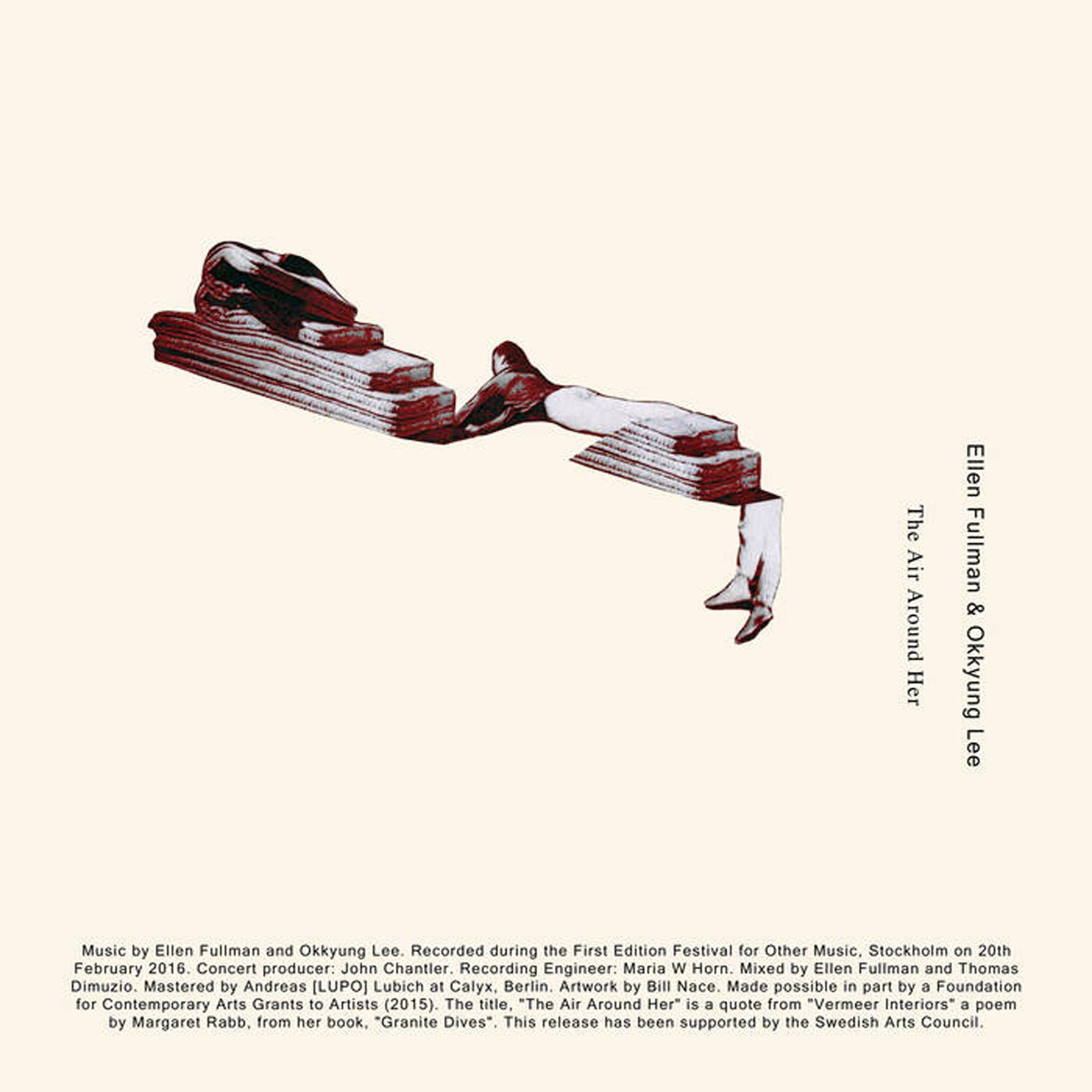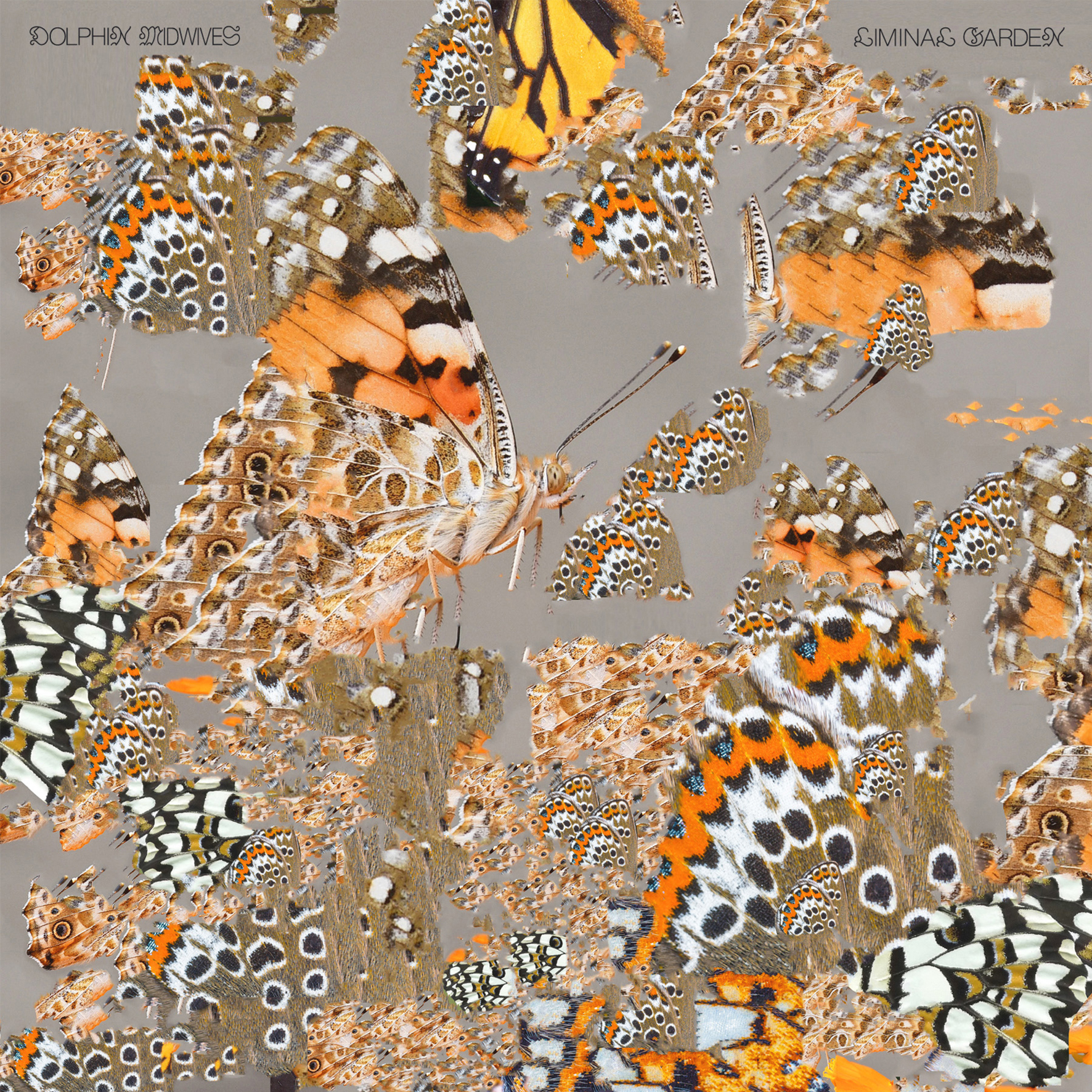 This unusual and fitfully fascinating album was quietly released near the end of 2018 on the small New Orleans-based Pinkbox Teleport label. INRA are themselves based in Berlin, yet The Content Consuming Its Form sounds very much like it was partially birthed in a bleak and blighted late-'70s industrial area, favorably recalling the UK’s finest art-damaged dystopian experimentalists of the period. While I probably would (guiltily) enjoy an album that was essentially straight-up Throbbing Gristle worship, INRA merely recapture the intelligence, low-budget futurism, and deep sense of post-modern alienation that defined the milieu of the era. Stylistically, they reanimate the formula with fresh blood in the form of kinetic drumming and nods to the heavier side of the dance music underground. While not every song gets the balance of murky mood and skittering, propulsive rhythms exactly right, the ones that do are a deliciously inventive feast of post-industrial collage done beautifully.
This unusual and fitfully fascinating album was quietly released near the end of 2018 on the small New Orleans-based Pinkbox Teleport label. INRA are themselves based in Berlin, yet The Content Consuming Its Form sounds very much like it was partially birthed in a bleak and blighted late-'70s industrial area, favorably recalling the UK’s finest art-damaged dystopian experimentalists of the period. While I probably would (guiltily) enjoy an album that was essentially straight-up Throbbing Gristle worship, INRA merely recapture the intelligence, low-budget futurism, and deep sense of post-modern alienation that defined the milieu of the era. Stylistically, they reanimate the formula with fresh blood in the form of kinetic drumming and nods to the heavier side of the dance music underground. While not every song gets the balance of murky mood and skittering, propulsive rhythms exactly right, the ones that do are a deliciously inventive feast of post-industrial collage done beautifully.
Hotter than July. This week's episode has plenty of fresh new music by Marie Davidson, Kim Gordon, Mabe Fratti, Guided By Voices, Holy Tongue meets Shackleton, Softcult, Terence Fixmer, Alan Licht, pigbaby, and Eiko Ishibashi, plus some vault goodies from Bombay S Jayashri and Pete Namlook & Richie Hawtin. Solstice moon in West Midlands, UK photo by James. Get involved: subscribe, review, rate, share with your friends, send images! |



 As Ellen Fullman can likely attest, one of the downsides to inventing your own instrument with 100-foot-long strings is that it definitely limits the number of possible venues for your performances. Another is that Fullman's Long String Instrument takes roughly five days to install and tune, adding yet another level of amusing inconvenience to the endeavor. Fortunately, an optimal situation surfaced in 2016, as John Chantler's First Edition Festival was given access to Stockholm’s Performing Arts Museum while it was being renovated. Given the limited "pure drone" nature of her instrument, the success of Fullman’s work can be heavily dependent on finding an appropriately sympathetic foil who can add vivid splashes of color and new layers of emotional depth to that rich harmonic backdrop. In that regard, Fullman could not possibly have hoped for a more talented and amenable collaborator than avant garde cello virtuoso Okkyung Lee.
As Ellen Fullman can likely attest, one of the downsides to inventing your own instrument with 100-foot-long strings is that it definitely limits the number of possible venues for your performances. Another is that Fullman's Long String Instrument takes roughly five days to install and tune, adding yet another level of amusing inconvenience to the endeavor. Fortunately, an optimal situation surfaced in 2016, as John Chantler's First Edition Festival was given access to Stockholm’s Performing Arts Museum while it was being renovated. Given the limited "pure drone" nature of her instrument, the success of Fullman’s work can be heavily dependent on finding an appropriately sympathetic foil who can add vivid splashes of color and new layers of emotional depth to that rich harmonic backdrop. In that regard, Fullman could not possibly have hoped for a more talented and amenable collaborator than avant garde cello virtuoso Okkyung Lee. This is arguably the formal debut album from Portland harpist Sage Fisher, though she previously surfaced with a fine cassette (Orchid Fire) back in 2016. Liminal Garden is on a completely different level than its more homespun predecessor though. If someone had told me fifteen years ago that several of my favorite artists would be harpists in the not too distant future, I would probably have thought they were completely delusional, but the instrument has undergone quite an incredible renaissance since Joanna Newsom's early albums blew up. While it is probably too soon to tell whether the more mysticism-minded Fisher has definitively earned a place in the same illustrious pantheon as Newsom and Mary Lattimore, her inventive use of effects and processing here frequently transcends harpistry altogether and calls to mind some of the most iconoclastic laptop composers of the early twenty-first century (if they lived in a fairy tale-like crystal palace in an enchanted forest). This is a wonderful and unexpected gem.
This is arguably the formal debut album from Portland harpist Sage Fisher, though she previously surfaced with a fine cassette (Orchid Fire) back in 2016. Liminal Garden is on a completely different level than its more homespun predecessor though. If someone had told me fifteen years ago that several of my favorite artists would be harpists in the not too distant future, I would probably have thought they were completely delusional, but the instrument has undergone quite an incredible renaissance since Joanna Newsom's early albums blew up. While it is probably too soon to tell whether the more mysticism-minded Fisher has definitively earned a place in the same illustrious pantheon as Newsom and Mary Lattimore, her inventive use of effects and processing here frequently transcends harpistry altogether and calls to mind some of the most iconoclastic laptop composers of the early twenty-first century (if they lived in a fairy tale-like crystal palace in an enchanted forest). This is a wonderful and unexpected gem. As someone who already reviewed Bowery Electric's third album 19 years ago, I can't discuss it now without recognizing the importance of their second album and the differences in the world where each existed. Whereas Beat was very much the right record at the right time, Lushlife, in hindsight, feels like the wrong record at the wrong time. What made the world listen to Beat was its seemingly effortless mastery of sound, structure, and songcraft. The group didn't follow a particular formula between tracks and it never felt as if they were obliged to reach for a hit single. Released originally in late 1996 on Kranky in the USA, it grabbed the attention of Beggars Banquet for a release in Europe followed by two remix 12" singles, a remix album, and worldwide distribution to the follow-up. While they may have not explicitly been tasked with the duty of creating a pop-breakthrough, Lushlife feels at times like Bowery Electric are aiming for it. The songs were certainly more consciously composed, lyrically dense, and the sounds on the whole were much more vibrant and stunning than previously. Martha's vocals are more pronounced and confident, the bass riffs are a thunderous force, the guitars are sublime, and the strings are gorgeous. The dominating backbone of the record is the hip-hop beats, which eventually becomes its weakness.
As someone who already reviewed Bowery Electric's third album 19 years ago, I can't discuss it now without recognizing the importance of their second album and the differences in the world where each existed. Whereas Beat was very much the right record at the right time, Lushlife, in hindsight, feels like the wrong record at the wrong time. What made the world listen to Beat was its seemingly effortless mastery of sound, structure, and songcraft. The group didn't follow a particular formula between tracks and it never felt as if they were obliged to reach for a hit single. Released originally in late 1996 on Kranky in the USA, it grabbed the attention of Beggars Banquet for a release in Europe followed by two remix 12" singles, a remix album, and worldwide distribution to the follow-up. While they may have not explicitly been tasked with the duty of creating a pop-breakthrough, Lushlife feels at times like Bowery Electric are aiming for it. The songs were certainly more consciously composed, lyrically dense, and the sounds on the whole were much more vibrant and stunning than previously. Martha's vocals are more pronounced and confident, the bass riffs are a thunderous force, the guitars are sublime, and the strings are gorgeous. The dominating backbone of the record is the hip-hop beats, which eventually becomes its weakness. I am hesitant to state that Private Parts is one of the most unique and weirdly beautiful albums of the 20th century, as that will likely sound like overheated hyperbole to anyone who has not heard it. Nevertheless, it is exactly that. Originally released back in 1978 and newly reissued, Ashley's hushed and intimate second album was unlike anything that came before it and no one else has since come anywhere close to replicating its precarious magic. That includes Ashley himself, as he revisited and expanded upon this album's themes with his ambitious television opera Perfect Lives, an ‘80s avant-garde landmark that has comparatively aged quite poorly. The elegantly simple piano-and-voice palette goes a long way towards making Private Parts feel timeless, but not nearly as much as the fact that it does not even sound like it was recorded on earth. Rather, it evokes the feeling of sitting next to an incredibly interesting, enigmatic, and gregarious man in heaven's waiting room.
I am hesitant to state that Private Parts is one of the most unique and weirdly beautiful albums of the 20th century, as that will likely sound like overheated hyperbole to anyone who has not heard it. Nevertheless, it is exactly that. Originally released back in 1978 and newly reissued, Ashley's hushed and intimate second album was unlike anything that came before it and no one else has since come anywhere close to replicating its precarious magic. That includes Ashley himself, as he revisited and expanded upon this album's themes with his ambitious television opera Perfect Lives, an ‘80s avant-garde landmark that has comparatively aged quite poorly. The elegantly simple piano-and-voice palette goes a long way towards making Private Parts feel timeless, but not nearly as much as the fact that it does not even sound like it was recorded on earth. Rather, it evokes the feeling of sitting next to an incredibly interesting, enigmatic, and gregarious man in heaven's waiting room. It recently occurred to me that Phill Niblock has a remarkably meager discography for a visionary composer with a body of work that spans five decades. I hesitate to describe anyone's career as undocumented these days, as the experimental music world is drowning in live recordings, unfortunate one-off collaborations, vault scrapings, and unnecessary reissues. Nevertheless, Music for Cello makes a strong case that Niblock probably has quite a backlog of unheard masterpieces wrongfully gathering dust somewhere, as the three pieces compiled here all date back roughly forty years (or more). However, they all sound like they could have been recorded this week. While these pieces chronologically represent quite an early stage of Niblock's lifelong fascination with sustained acoustic tones and the interplay of frequencies, his mastery of the form was already amply evident. In fact, Music For Cello is actually superior to some albums from Niblock's classic run of Touch releases. I am delighted that I finally got to hear it.
It recently occurred to me that Phill Niblock has a remarkably meager discography for a visionary composer with a body of work that spans five decades. I hesitate to describe anyone's career as undocumented these days, as the experimental music world is drowning in live recordings, unfortunate one-off collaborations, vault scrapings, and unnecessary reissues. Nevertheless, Music for Cello makes a strong case that Niblock probably has quite a backlog of unheard masterpieces wrongfully gathering dust somewhere, as the three pieces compiled here all date back roughly forty years (or more). However, they all sound like they could have been recorded this week. While these pieces chronologically represent quite an early stage of Niblock's lifelong fascination with sustained acoustic tones and the interplay of frequencies, his mastery of the form was already amply evident. In fact, Music For Cello is actually superior to some albums from Niblock's classic run of Touch releases. I am delighted that I finally got to hear it. Hot on the heels of the seismic sine-wave experimentation of Front Variations, this pair of EPs rounds out Richard Skelton's prolific winter with a welcome return to more familiar territory. Both intended as accompaniments to his most recent book of poetry (Dark Hollow Dark), the two releases take differing themes as inspiration, but both paths ultimately lead to strong, slow-burning drone pieces. Of the two, the darker and more primal Another Hand is the more powerful and fully realized work. Together, the releases complement each other beautifully to form an extremely satisfying and haunting diptych.
Hot on the heels of the seismic sine-wave experimentation of Front Variations, this pair of EPs rounds out Richard Skelton's prolific winter with a welcome return to more familiar territory. Both intended as accompaniments to his most recent book of poetry (Dark Hollow Dark), the two releases take differing themes as inspiration, but both paths ultimately lead to strong, slow-burning drone pieces. Of the two, the darker and more primal Another Hand is the more powerful and fully realized work. Together, the releases complement each other beautifully to form an extremely satisfying and haunting diptych. Over the last several years, Marc Richter's Black to Comm project has swelled considerably in ambition and scope, blossoming into a shape-shifting and idiosyncratic force with a strong propensity for the epic. With this latest album, his first for Thrill Jockey, Richter reaches a darkly hallucinatory new plateau with his art. It is difficult to say whether Seven Horses For Seven Kings is Richter's masterpiece, as there is stiff competition from a couple of his other recent albums, but it is unquestionably his heaviest and most vividly absorbing opus to date, unfolding as a disorienting and harrowing nightmare that increasingly stretches and strains towards transcendence.
Over the last several years, Marc Richter's Black to Comm project has swelled considerably in ambition and scope, blossoming into a shape-shifting and idiosyncratic force with a strong propensity for the epic. With this latest album, his first for Thrill Jockey, Richter reaches a darkly hallucinatory new plateau with his art. It is difficult to say whether Seven Horses For Seven Kings is Richter's masterpiece, as there is stiff competition from a couple of his other recent albums, but it is unquestionably his heaviest and most vividly absorbing opus to date, unfolding as a disorienting and harrowing nightmare that increasingly stretches and strains towards transcendence. I have mixed feelings about vinyl-only reissues, but there is no denying that they are an extremely effective way to rekindle interest in a long-neglected album that should not be languishing in obscurity. This album is an excellent example of that phenomenon, as Geelriandre/Arthesis has been fairly easy to track down digitally for a while and few were clamoring for it. Now that it is getting a formal physical resurrection, however, it is deservedly back in the public consciousness. As far as Radigue albums go, it is a somewhat unique one, occupying a grey area between the more divergent Alga Marghen albums and her more universally revered drone epics. It shares much more common ground with the latter, but it sometimes feels like an embryonic version that is still partially indebted to the avant-garde zeitgeist of the era. Nevertheless, it is quite a fascinating album, taking an alternate and almost sci-fi-damaged path quite unlike the pure and focused vision of Radigue's later recordings.
I have mixed feelings about vinyl-only reissues, but there is no denying that they are an extremely effective way to rekindle interest in a long-neglected album that should not be languishing in obscurity. This album is an excellent example of that phenomenon, as Geelriandre/Arthesis has been fairly easy to track down digitally for a while and few were clamoring for it. Now that it is getting a formal physical resurrection, however, it is deservedly back in the public consciousness. As far as Radigue albums go, it is a somewhat unique one, occupying a grey area between the more divergent Alga Marghen albums and her more universally revered drone epics. It shares much more common ground with the latter, but it sometimes feels like an embryonic version that is still partially indebted to the avant-garde zeitgeist of the era. Nevertheless, it is quite a fascinating album, taking an alternate and almost sci-fi-damaged path quite unlike the pure and focused vision of Radigue's later recordings. The Dead C have been on an impressive hot streak in recent years, so it was a reasonably safe bet that I would be delighted yet again by Rare Ravers. However, I was definitely not expecting such a revelatory leap forward this deep into the band's career. Immodestly described as "recorded and burned through a thousand galaxies of dust and doubt and endless infinite wonder, transforming both time and space," this album feels like it was conscientiously sculpted to ravaged perfection in an actual studio and it sounds absolutely amazing. As it turns out, The Dead C's long history of rehearsal tape-level sound quality and shambolic, messy self-indulgence concealed the fact that they were secretly an extremely tight band capable of unleashing firestorms of howling guitar noise with the precision of a scalpel. I imagine some fans are still holding out hope that the band will someday return to writing actual songs with lyrics and vocals, but this album is an instant classic as far as I am concerned.
The Dead C have been on an impressive hot streak in recent years, so it was a reasonably safe bet that I would be delighted yet again by Rare Ravers. However, I was definitely not expecting such a revelatory leap forward this deep into the band's career. Immodestly described as "recorded and burned through a thousand galaxies of dust and doubt and endless infinite wonder, transforming both time and space," this album feels like it was conscientiously sculpted to ravaged perfection in an actual studio and it sounds absolutely amazing. As it turns out, The Dead C's long history of rehearsal tape-level sound quality and shambolic, messy self-indulgence concealed the fact that they were secretly an extremely tight band capable of unleashing firestorms of howling guitar noise with the precision of a scalpel. I imagine some fans are still holding out hope that the band will someday return to writing actual songs with lyrics and vocals, but this album is an instant classic as far as I am concerned.
